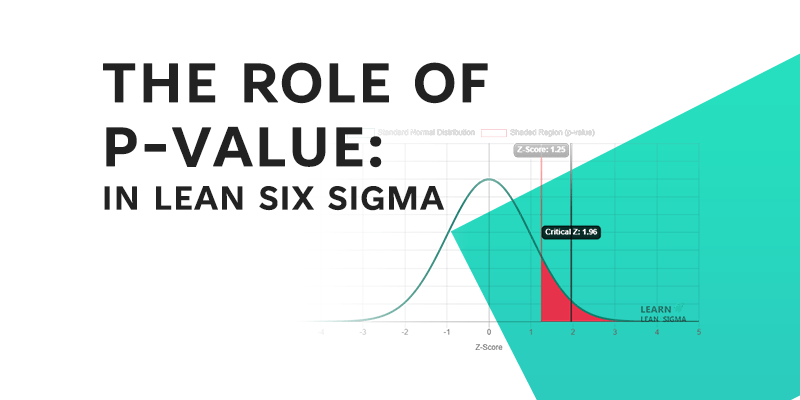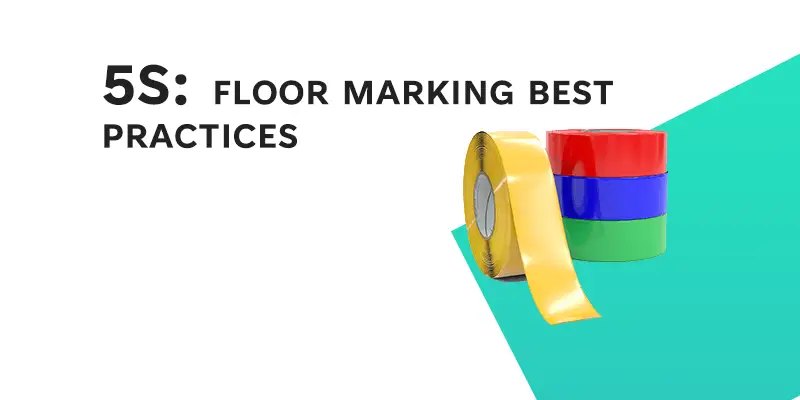Skills for Success

- November 2013
- August 2013
- January 2013
- November 2012
- October 2012

The Problem Solving Cycle – An effective step-by-step approach to find viable solutions
Problem solving is a mental process that involves discovering and analyzing a particular issue, developing strategies, and organizing skills and knowledge in order to overcome obstacles and find viable solutions that best resolve the problem.
The choice of an appropriate strategy depends largely on the unique situation. In fact, there are many different problem solving processes. However, all of them consist of a series of steps. It is useful to view problem solving as a cycle as a problem often needs several attempts to be solved. In the following, we present a seven-step problem solving model:

Step 1: Identify the problem
What is the problem? The first step consists in recognizing the existence of a problem that needs to be solved. In order to find an appropriate solution, you need to identify and name the problem. While it may seem like an obvious and simple step, finding the source of a problem is often the most challenging part of the process. You may not be clear of what the problem is or feel anxious and confused about what is getting in the way of your goals. Ask questions, which help you to determine the difference between what is expected and what is occurring, like: What is the nature of this special problem? Is it temporary or longer-term? Does the problem affect other persons or only you? Will others need to be consulted? What do they know about it? What is hindering you from completing this task? Do you need more time, information or experience?
Step 2: Explore possible strategies
The next stage is to research the problem as fully as possible and to explore possible problem solving strategies. Think about the different elements of the problem by watching it from different angles. You can ask yourself questions such as: How would another person perceive the situation? What would he/she do? What were the best ideas that my competitors have had? Are there existing solutions? Explore as widely as possible, e.g. through brain storming, imaging/visualization or other creative and analytical tools in order to generate many potential solutions. List and discuss them. Then, form possible problem strategies. The next step helps you in doing this.
Step 3: Set goals
Goal setting is crucial to reach your strategic objectives. Goal setting is a powerful process for thinking about your ideal future, and for motivating yourself to turn your vision of this future into reality. Key questions are: What is it that you want to achieve? What would it be like without the problem? What do you want things to be like instead? It is important to solve a problem at the right level. If you ask questions that are too broad, then you’ll never have enough resources to answer them effectively. If you ask questions that are too narrow, you may end up fixing the symptoms of a problem, rather than the problem itself. One effective tool to set goals at the right level is the SMART criteria.
Step 4: Look at alternatives
How many different approaches can you think of that will solve the problem? What are the pros and cons of each approach? When you have decided what your goal is you need to look for possible solutions. The more possible solutions you find the more likely it is that you will be able to discover an effective solution. You can brain-storm for ideas. The purpose of brain storming is to compile a list of possibilities. It does not matter whether the ideas are useful or practical or manageable: just write down the ideas as they come into your mind. Some of the best solutions arise from creative thinking during brain storming . You can also seek ideas about possible solutions from friends, family, a partner, a counsellor, books or the internet. The aim is to collect as many alternative solutions as possible.
Step 5: Select a possible solution
Decide which of the available options you will choose. You should be prepared to give reasons why and be able to show that this is the best of all options available. From the list of possible solutions you can sort out, which are most relevant to your situation and which are realistic and manageable. You can do this by predicting outcomes for possible solutions and also checking with other people what they think outcomes might be. When you have explored the consequences, you can use this information to identify the most relevant solution.
Step 6: Implement a possible solution
Once you have selected a possible solution put your plan into action. Create an action list, which comprises the following elements: What needs to be done and by whom? Can you chunk your plan into smaller bites? Estimate how many time, money, and effort will be needed to realize your subgoals. An essential question to motivate yourself is: What rewards you will give yourself when you have done it?
Step 7: Evaluate the result
After a solution has been reached, it is important to evaluate the results to determine if it is the best possible solution to the problem. Decide how you will quantify the success of your problem solving strategy. Questions are: How effective was that solution? Did I achieve what I wanted? How do I know this?
If the implemented strategy was successful in helping you solve your problem and reach your goal, then you know that you have effectively solved your problem. If you feel dissatisfied with the result, try alternative possibilities by beginning the problem solving cycle again.
Further information? www.ansus-consulting.com | Communication and Thinking Skills
Sharen mit:
One comment.
Pingback: Finding creative solutions to Everyday Challenges | martinacarroll
Leave a comment Cancel reply
- Already have a WordPress.com account? Log in now.
- Subscribe Subscribed
- Copy shortlink
- Report this content
- View post in Reader
- Manage subscriptions
- Collapse this bar

What is Problem Solving? (Steps, Techniques, Examples)
By Status.net Editorial Team on May 7, 2023 — 5 minutes to read
What Is Problem Solving?
Definition and importance.
Problem solving is the process of finding solutions to obstacles or challenges you encounter in your life or work. It is a crucial skill that allows you to tackle complex situations, adapt to changes, and overcome difficulties with ease. Mastering this ability will contribute to both your personal and professional growth, leading to more successful outcomes and better decision-making.
Problem-Solving Steps
The problem-solving process typically includes the following steps:
- Identify the issue : Recognize the problem that needs to be solved.
- Analyze the situation : Examine the issue in depth, gather all relevant information, and consider any limitations or constraints that may be present.
- Generate potential solutions : Brainstorm a list of possible solutions to the issue, without immediately judging or evaluating them.
- Evaluate options : Weigh the pros and cons of each potential solution, considering factors such as feasibility, effectiveness, and potential risks.
- Select the best solution : Choose the option that best addresses the problem and aligns with your objectives.
- Implement the solution : Put the selected solution into action and monitor the results to ensure it resolves the issue.
- Review and learn : Reflect on the problem-solving process, identify any improvements or adjustments that can be made, and apply these learnings to future situations.
Defining the Problem
To start tackling a problem, first, identify and understand it. Analyzing the issue thoroughly helps to clarify its scope and nature. Ask questions to gather information and consider the problem from various angles. Some strategies to define the problem include:
- Brainstorming with others
- Asking the 5 Ws and 1 H (Who, What, When, Where, Why, and How)
- Analyzing cause and effect
- Creating a problem statement
Generating Solutions
Once the problem is clearly understood, brainstorm possible solutions. Think creatively and keep an open mind, as well as considering lessons from past experiences. Consider:
- Creating a list of potential ideas to solve the problem
- Grouping and categorizing similar solutions
- Prioritizing potential solutions based on feasibility, cost, and resources required
- Involving others to share diverse opinions and inputs
Evaluating and Selecting Solutions
Evaluate each potential solution, weighing its pros and cons. To facilitate decision-making, use techniques such as:
- SWOT analysis (Strengths, Weaknesses, Opportunities, Threats)
- Decision-making matrices
- Pros and cons lists
- Risk assessments
After evaluating, choose the most suitable solution based on effectiveness, cost, and time constraints.
Implementing and Monitoring the Solution
Implement the chosen solution and monitor its progress. Key actions include:
- Communicating the solution to relevant parties
- Setting timelines and milestones
- Assigning tasks and responsibilities
- Monitoring the solution and making adjustments as necessary
- Evaluating the effectiveness of the solution after implementation
Utilize feedback from stakeholders and consider potential improvements. Remember that problem-solving is an ongoing process that can always be refined and enhanced.
Problem-Solving Techniques
During each step, you may find it helpful to utilize various problem-solving techniques, such as:
- Brainstorming : A free-flowing, open-minded session where ideas are generated and listed without judgment, to encourage creativity and innovative thinking.
- Root cause analysis : A method that explores the underlying causes of a problem to find the most effective solution rather than addressing superficial symptoms.
- SWOT analysis : A tool used to evaluate the strengths, weaknesses, opportunities, and threats related to a problem or decision, providing a comprehensive view of the situation.
- Mind mapping : A visual technique that uses diagrams to organize and connect ideas, helping to identify patterns, relationships, and possible solutions.
Brainstorming
When facing a problem, start by conducting a brainstorming session. Gather your team and encourage an open discussion where everyone contributes ideas, no matter how outlandish they may seem. This helps you:
- Generate a diverse range of solutions
- Encourage all team members to participate
- Foster creative thinking
When brainstorming, remember to:
- Reserve judgment until the session is over
- Encourage wild ideas
- Combine and improve upon ideas
Root Cause Analysis
For effective problem-solving, identifying the root cause of the issue at hand is crucial. Try these methods:
- 5 Whys : Ask “why” five times to get to the underlying cause.
- Fishbone Diagram : Create a diagram representing the problem and break it down into categories of potential causes.
- Pareto Analysis : Determine the few most significant causes underlying the majority of problems.
SWOT Analysis
SWOT analysis helps you examine the Strengths, Weaknesses, Opportunities, and Threats related to your problem. To perform a SWOT analysis:
- List your problem’s strengths, such as relevant resources or strong partnerships.
- Identify its weaknesses, such as knowledge gaps or limited resources.
- Explore opportunities, like trends or new technologies, that could help solve the problem.
- Recognize potential threats, like competition or regulatory barriers.
SWOT analysis aids in understanding the internal and external factors affecting the problem, which can help guide your solution.
Mind Mapping
A mind map is a visual representation of your problem and potential solutions. It enables you to organize information in a structured and intuitive manner. To create a mind map:
- Write the problem in the center of a blank page.
- Draw branches from the central problem to related sub-problems or contributing factors.
- Add more branches to represent potential solutions or further ideas.
Mind mapping allows you to visually see connections between ideas and promotes creativity in problem-solving.
Examples of Problem Solving in Various Contexts
In the business world, you might encounter problems related to finances, operations, or communication. Applying problem-solving skills in these situations could look like:
- Identifying areas of improvement in your company’s financial performance and implementing cost-saving measures
- Resolving internal conflicts among team members by listening and understanding different perspectives, then proposing and negotiating solutions
- Streamlining a process for better productivity by removing redundancies, automating tasks, or re-allocating resources
In educational contexts, problem-solving can be seen in various aspects, such as:
- Addressing a gap in students’ understanding by employing diverse teaching methods to cater to different learning styles
- Developing a strategy for successful time management to balance academic responsibilities and extracurricular activities
- Seeking resources and support to provide equal opportunities for learners with special needs or disabilities
Everyday life is full of challenges that require problem-solving skills. Some examples include:
- Overcoming a personal obstacle, such as improving your fitness level, by establishing achievable goals, measuring progress, and adjusting your approach accordingly
- Navigating a new environment or city by researching your surroundings, asking for directions, or using technology like GPS to guide you
- Dealing with a sudden change, like a change in your work schedule, by assessing the situation, identifying potential impacts, and adapting your plans to accommodate the change.
- How to Resolve Employee Conflict at Work [Steps, Tips, Examples]
- How to Write Inspiring Core Values? 5 Steps with Examples
- 30 Employee Feedback Examples (Positive & Negative)
- Bipolar Disorder
- Therapy Center
- When To See a Therapist
- Types of Therapy
- Best Online Therapy
- Best Couples Therapy
- Best Family Therapy
- Managing Stress
- Sleep and Dreaming
- Understanding Emotions
- Self-Improvement
- Healthy Relationships
- Student Resources
- Personality Types
- Guided Meditations
- Verywell Mind Insights
- 2024 Verywell Mind 25
- Mental Health in the Classroom
- Editorial Process
- Meet Our Review Board
- Crisis Support
Overview of the Problem-Solving Mental Process
Kendra Cherry, MS, is a psychosocial rehabilitation specialist, psychology educator, and author of the "Everything Psychology Book."
:max_bytes(150000):strip_icc():format(webp)/IMG_9791-89504ab694d54b66bbd72cb84ffb860e.jpg)
Rachel Goldman, PhD FTOS, is a licensed psychologist, clinical assistant professor, speaker, wellness expert specializing in eating behaviors, stress management, and health behavior change.
:max_bytes(150000):strip_icc():format(webp)/Rachel-Goldman-1000-a42451caacb6423abecbe6b74e628042.jpg)
- Identify the Problem
- Define the Problem
- Form a Strategy
- Organize Information
- Allocate Resources
- Monitor Progress
- Evaluate the Results
Frequently Asked Questions
Problem-solving is a mental process that involves discovering, analyzing, and solving problems. The ultimate goal of problem-solving is to overcome obstacles and find a solution that best resolves the issue.
The best strategy for solving a problem depends largely on the unique situation. In some cases, people are better off learning everything they can about the issue and then using factual knowledge to come up with a solution. In other instances, creativity and insight are the best options.
It is not necessary to follow problem-solving steps sequentially, It is common to skip steps or even go back through steps multiple times until the desired solution is reached.
In order to correctly solve a problem, it is often important to follow a series of steps. Researchers sometimes refer to this as the problem-solving cycle. While this cycle is portrayed sequentially, people rarely follow a rigid series of steps to find a solution.
The following steps include developing strategies and organizing knowledge.
1. Identifying the Problem
While it may seem like an obvious step, identifying the problem is not always as simple as it sounds. In some cases, people might mistakenly identify the wrong source of a problem, which will make attempts to solve it inefficient or even useless.
Some strategies that you might use to figure out the source of a problem include :
- Asking questions about the problem
- Breaking the problem down into smaller pieces
- Looking at the problem from different perspectives
- Conducting research to figure out what relationships exist between different variables
2. Defining the Problem
After the problem has been identified, it is important to fully define the problem so that it can be solved. You can define a problem by operationally defining each aspect of the problem and setting goals for what aspects of the problem you will address
At this point, you should focus on figuring out which aspects of the problems are facts and which are opinions. State the problem clearly and identify the scope of the solution.
3. Forming a Strategy
After the problem has been identified, it is time to start brainstorming potential solutions. This step usually involves generating as many ideas as possible without judging their quality. Once several possibilities have been generated, they can be evaluated and narrowed down.
The next step is to develop a strategy to solve the problem. The approach used will vary depending upon the situation and the individual's unique preferences. Common problem-solving strategies include heuristics and algorithms.
- Heuristics are mental shortcuts that are often based on solutions that have worked in the past. They can work well if the problem is similar to something you have encountered before and are often the best choice if you need a fast solution.
- Algorithms are step-by-step strategies that are guaranteed to produce a correct result. While this approach is great for accuracy, it can also consume time and resources.
Heuristics are often best used when time is of the essence, while algorithms are a better choice when a decision needs to be as accurate as possible.
4. Organizing Information
Before coming up with a solution, you need to first organize the available information. What do you know about the problem? What do you not know? The more information that is available the better prepared you will be to come up with an accurate solution.
When approaching a problem, it is important to make sure that you have all the data you need. Making a decision without adequate information can lead to biased or inaccurate results.
5. Allocating Resources
Of course, we don't always have unlimited money, time, and other resources to solve a problem. Before you begin to solve a problem, you need to determine how high priority it is.
If it is an important problem, it is probably worth allocating more resources to solving it. If, however, it is a fairly unimportant problem, then you do not want to spend too much of your available resources on coming up with a solution.
At this stage, it is important to consider all of the factors that might affect the problem at hand. This includes looking at the available resources, deadlines that need to be met, and any possible risks involved in each solution. After careful evaluation, a decision can be made about which solution to pursue.
6. Monitoring Progress
After selecting a problem-solving strategy, it is time to put the plan into action and see if it works. This step might involve trying out different solutions to see which one is the most effective.
It is also important to monitor the situation after implementing a solution to ensure that the problem has been solved and that no new problems have arisen as a result of the proposed solution.
Effective problem-solvers tend to monitor their progress as they work towards a solution. If they are not making good progress toward reaching their goal, they will reevaluate their approach or look for new strategies .
7. Evaluating the Results
After a solution has been reached, it is important to evaluate the results to determine if it is the best possible solution to the problem. This evaluation might be immediate, such as checking the results of a math problem to ensure the answer is correct, or it can be delayed, such as evaluating the success of a therapy program after several months of treatment.
Once a problem has been solved, it is important to take some time to reflect on the process that was used and evaluate the results. This will help you to improve your problem-solving skills and become more efficient at solving future problems.
A Word From Verywell
It is important to remember that there are many different problem-solving processes with different steps, and this is just one example. Problem-solving in real-world situations requires a great deal of resourcefulness, flexibility, resilience, and continuous interaction with the environment.
Get Advice From The Verywell Mind Podcast
Hosted by therapist Amy Morin, LCSW, this episode of The Verywell Mind Podcast shares how you can stop dwelling in a negative mindset.
Follow Now : Apple Podcasts / Spotify / Google Podcasts
You can become a better problem solving by:
- Practicing brainstorming and coming up with multiple potential solutions to problems
- Being open-minded and considering all possible options before making a decision
- Breaking down problems into smaller, more manageable pieces
- Asking for help when needed
- Researching different problem-solving techniques and trying out new ones
- Learning from mistakes and using them as opportunities to grow
It's important to communicate openly and honestly with your partner about what's going on. Try to see things from their perspective as well as your own. Work together to find a resolution that works for both of you. Be willing to compromise and accept that there may not be a perfect solution.
Take breaks if things are getting too heated, and come back to the problem when you feel calm and collected. Don't try to fix every problem on your own—consider asking a therapist or counselor for help and insight.
If you've tried everything and there doesn't seem to be a way to fix the problem, you may have to learn to accept it. This can be difficult, but try to focus on the positive aspects of your life and remember that every situation is temporary. Don't dwell on what's going wrong—instead, think about what's going right. Find support by talking to friends or family. Seek professional help if you're having trouble coping.
Davidson JE, Sternberg RJ, editors. The Psychology of Problem Solving . Cambridge University Press; 2003. doi:10.1017/CBO9780511615771
Sarathy V. Real world problem-solving . Front Hum Neurosci . 2018;12:261. Published 2018 Jun 26. doi:10.3389/fnhum.2018.00261
By Kendra Cherry, MSEd Kendra Cherry, MS, is a psychosocial rehabilitation specialist, psychology educator, and author of the "Everything Psychology Book."
You have been directed to the official University of Southampton website
The web address you followed in your web browser or e-mail that claimed to be the University of Southampton was not genuine.
The official web page of the University of Southampton is: southampton.ac.uk
If you have engaged with any persons at an address other than southampton.ac.uk or soton.ac.uk then you may have been a victim of a crime, in which case please contact the University’s Data Protection team: [email protected] .
- CC0 version of this metadata
Journal article
Joint problem solving and the role of third parties: an evaluation of acas advisory work.
Ian Kessler and John Purcell, Fellows of Templeton College, Oxford, use data from a postal survey and case studies of organisations seeking in-depth advisory assistance from ACAS to evaluate the effectiveness of joint problem solving techniques. They find strong support from both managers and employee representatives for the use of joint working parties in the management of change in employment relations. ACAS's unique role as an independent and impartial third party is seen as critical in he...
Email this record
Please enter the email address that the record information will be sent to.
Please add any additional information to be included within the email.
Cite this record
Chicago style, bibliographic details, item description, terms of use, views and downloads.
If you are the owner of this record, you can report an update to it here: Report update to this record
Report an update
We require your email address in order to let you know the outcome of your enquiry.
ACAS (Advisory, Conciliation and Arbitration Service)

As an employer, there is a good chance that you will run into conflict between yourself and an employee. The reasons for the conflict could be down to several things, such as pay and working hours.
How you deal with these issues can be confusing, and if they are done incorrectly could land you in trouble.
In the article, we are going to dive into what ACAS is, how it can help employers, and how their services work.

What is ACAS?
ACAS is an independent and impartial organisation that helps to improve the working life of employers, employees and the overall organisation.
They offer free advice, information and guidance on the rules and practices for employers, employees and trade union representatives.
What does ACAS stand for?
ACAS stands for the Advisory Conciliation and Arbitration Service. Taking three separate services that are utilised by businesses to help them reach a suitable resolution.
To understand ACAS fully, you need to break conciliation and arbitration into separate entities and understand how they can help you and your workforce.

What issues does ACAS help with?
Employers need to understand what kinds of problems ACAS can help with if needed, this could include the following:
- Dismissals .
- Disciplinary and grievance issues
- Discrimination , harassment or bullying.
How does ACAS help enforce employment law?
ACAS was put in place to help businesses find solutions, improve organisations' performance, solve disputes, and promote good practices in workplaces. ACAS works to help employers avoid large-scale industrial disputes by preventing or solving problems before they become larger disputes, such as strikes.
Advisory Conciliation and Arbitration Service (ACAS) enforces employment law by providing free impartial guidance on:
- Best practices, rules and policies,
- Working with employees to resolve workplace conflicts.
What is conciliation?
ACAS provide Employees with conciliation assistance when employees and employers are looking to make a complaint about their employer at an employment tribunal.

What's the purpose of ACAS early conciliation?
The purpose of the ACAS early conciliation is to avoid both employers and employees going to an employment tribunal to solve their dispute.
How does ACAS conciliation work?
The main use case for conciliation is to avoid employment tribunals, this is mainly used to help individual complaints, group complaints will go through a different process.
On an individual complaint, ACAS will speak to both parties, arrange a mediator, and aim to reach a settlement agreement without the need for an employment tribunal. You could look at conciliation as the last chance to solve any issues before the employee's claim can be heard at a tribunal. Although once early conciliation period has ended, ACAS can still be involved if the parties want to continue exploring settlement options.
What is Arbitration?
An arbitration service is slightly different to conciliation, this is where a third party is brought into a dispute to help find a resolution. ACAS will work with both the employers and employees, and provide these two types of arbitration:
- Individual arbitration, for example, could be a case regarding flexible working, or an unfair dismissal.
- Collective arbitration, for example, will cover cases that involve an employer and a group of employees.
Employers need to know how arbitration services work.

How does the Arbitration service work?
ACAS's arbitration service is there to help make and maintain a better relationship between employers and employees.
Typically, the arbitrator is appointed by ACAS and each side must agree to the decision for the process to start. From here the arbitrator will put together the hearing, which will cover all the aspects of the dispute or events.
The hearing process is as follows:
- Confirm the dispute the decision needs to be made on.
- Allow all parties to explain their case and present any evidence.
- Discuss the case and answer questions related to the dispute.
- Each party is allowed to ask questions based on the evidence they have presented.
The results of the hearing are sent within 21 days for collective disputes and 14 days for individual disputes.
What is the ACAS code of practice?
The ACAS code of practice is a set of standards that are expected in the workplace by employers and employees.
The code includes the following:
- Code of Practice on disclosure of information to trade unions for collective bargaining purposes
- Code of practice on the settlement agreement.
- Amend to Code of Practice on flexible working requests
- Code of practice on time off for trade union duties and activities.
- Code of practice on disciplinary and grievance procedures.
The ACAS code of practice should be used to run an organisation successfully and avoid employment tribunals. There is a statutory code of practice, if this is not followed by the employer, it can result in an increase of the award at tribunal.

Get expert advice on ACAS from Croner
Croner has a team of award-winning HR consultants who are specialists in their field. We've been helping businesses for over 80 years and our advice line is open 365 days a year, 24 hours a day. Why not speak to a Croner expert on 0800 124 4996.
If you like this content, you may also like

- HR Operations: The Business Essential

- HR Over The Years

- Managing strikes in the workplace
About the Author

Amanda represents corporate clients and large public bodies, including complex discrimination and whistleblowing claims. Amanda also drafts and delivers bespoke training regarding all aspects of employment law, including ‘mock tribunal’ events; in addition she also frequently drafts employment law articles for various publications for Croner and their clients.

Related resources
- Business Advice
- Contracts & Documentation
- Culture & Performance
- Disciplinary & Grievances
- Dismissals & Conduct
- Employee Conduct
- Employment Law
- End of Contract
- Equality & Discrimination
- Health & Safety
- Hiring & Managing
- Leave & Absence
- Managing Health & Safety
- Occupational Health
- Pay & Benefits
- Recruitment
- Risk & Welfare
Any Questions?
Call us today on 01455 858 132 or fill in your details below to speak to an expert.
- Payback Calculator
- ACAS (Advisory, Conciliation and Arbitration Service)

Peninsula Group , HR and Health & Safety Experts
Jul 9th 2019 (Last updated Apr 5th 2024 )

In this guide, we'll discuss what ACAS is, how they help employers, the issues they deal with and how their services work.
Jump to section:
What is ACAS?
What issues does acas help with, how does acas help enforce employment law, what is conciliation, how does acas conciliation work, what is arbitration, how does the arbitration service work, what is the acas code of practice, get expert advice on acas with peninsula.
As a business owner, sometimes there will be a conflict between yourself and an employee. This could be between pay or hours, but how you go about resolving the issue can be confusing.
Failure to resolve any conflicts as quickly as possible can go a long way in a claim being made against you, which could lead to an employment tribunal.
Claim your free advice call
Find the safest and easiest way to resolve your workplace issue
ACAS is an independent and impartial organisation whose aims are to improve the working life of both employers, employees and to improve organisations. They've been advising the employment world for over 30 years and became a household name in the 1980s.
ACAS is an executive public body sponsored by the Department for Business, Energy & Industrial Strategy, which is governed by an independent council.
They provide free information, impartial advice and guidance on the rules and best practices to employers, employees, and representatives of a trade union.
In order to understand how ACAS can help your business, it's important you understand how they work.
What does ACAS stand for?
ACAS stands for Advisory Conciliation and Arbitration Service, which breaks down the three separate services which are used to help businesses reach suitable resolutions.
Before you fully understand how ACAS can work for your business, you need to break conciliation and arbitration service into two separate entities and learn how they can help you and your employees.
As an employer, it's important you understand the sort of problems ACAS can assist you with should they occur in your workplace. Such as:
- Dismissals such as unfair, wrong and constructive .
- Discrimination , bullying or harassment .
- Disciplinary or grievance.
How does ACAS help with employment relations?
ACAS works to resolve disputes , find solutions, improve performance and aims to promote good practice in all workplaces. They don't side with a particular party during employment conflicts.
Helping businesses with their employment relations means you can solve problems and improve performance moving forward.
ACAS works to avoid large-scale industrial disputes by trying to prevent problems before they arise and find suitable resolutions before they become bigger disputes.
ACAS (advisory conciliation and arbitration service) helps to enforce employment law by working with businesses of all sizes to improve the working life for both employers and workers.
They provide free and impartial guidance on the following:
- Employment rights (such as pay and leave entitlements ).
- Best practices, rules and policies.
- How best to resolve workplace conflicts .
Their main strategy is to improve organisations and avoid employment tribunals.
Conciliation is assistance provided by ACAS to employees who are looking to take a complaint against their employer to an employment tribunal.
The early stages of ACAS conciliation are used to help avoid a tribunal hearing taking place.

What's the purpose of ACAS early conciliation?
To put it simply, the main purpose of early conciliation is to avoid both sides having to go to an employment tribunal. It's used to help with individual complaints rather than on a group basis.
ACAS speaks with both parties, arranges a mediator and hopefully reaches a settlement agreement without having to stand up in front of an employment tribunal .
In essence, conciliation is the last opportunity to solve the dispute before the employee's full application is made to be heard by a tribunal.
To begin the conciliation process, your employee will need to complete an Early Conciliation Notification Form - which can be found on ACAS website .
The usual time period for conciliation to take place is a month, but it can be increased to another 14 days if required.
If the conciliation fails, ACAS will close the process and give the employee an early conciliation certificate. The certificate includes a number which must be put on the form they must fill in when making their tribunal claim.
Arbitration is when a third party is brought into a dispute to find a resolution. ACAS works with employers and employees to provide two types of arbitration. Such as:
- Collective arbitration: This is for a case between the employer and a group of employees.
- Individual arbitration: This is for a case regarding flexible working or unfair dismissal between the employer and employee.
As an employer, it's important you understand how the arbitration service works in case it's ever required in your company.
ACAS' arbitration service is in place to help create and maintain better employment relations between employer and employee.
An arbitrator is appointed by ACAS, and both sides must agree to accept their decision before the process starts. The arbitrator will arrange the hearing, which will deal with all aspects of the event.
The process of the hearing is as follows:
- Confirm the dispute they're making a decision on.
- Allow both sides to explain their case and present any evidence.
- Discuss the case and ask any questions they seem fit.
- Allow both sides to ask questions of the other party based on the evidence presented.
The result of the hearing will be sent within 21 days for collective disputes and 14 days for individual disputes.
The ACAS code of practice is the minimum set of standards that are expected in the workplace by employers and employees. The code is used by employment tribunals when deciding on the outcome of a case.
The following are included in the code:
- Code of Practice on disciplinary and grievance procedures.
- Code of Practice on disclosure of information of trade unions for the collective bargaining process .
- Code of Practice on time off for trade union duties and activities.
- Code of Practice on settlement agreements.
- Code of Practice on handling a reasonable manner request to work flexibly.
In essence, the code should be used by employers in order to run a successful organisation and avoid an independent tribunal.
Workplace conflicts are sometimes unavoidable - so if this happens in your workplace, it's important you understand where you can receive free guidance from.
ACAS (Advisory Conciliation and Arbitration Service) are there to help employers and employees should a conflict need resolving before the need for an employment tribunal. Their Code of Practice is in place to ensure standards are met.
Peninsula offers expert advice on Acas. Our teams provide 24/7 HR advice which is available 365 days a year. We take care of everything when you work with our HR experts.
Want to find out more? Contact us on 0800 028 2420 and book a free consultation with an HR consultant today.
Try Brainbox for free today
When AI meets 40 years of Peninsula expertise... you get instant, expert answers to your HR and Health & Safety questions
Got a question? Check whether we’ve already answered it for you…
What are employment tribunals?
An employment tribunal is a public body that is in place to resolve disputes between employer and employee.
Are decisions made by an employment tribunal legally binding?
Yes, even though they're not as formal as court hearings - the outcome giving by the tribunal is legally binding.
What claims does an employment tribunal deal with?
Employment tribunals deal with a range of disputes. Such as dismissal, equal pay, redundancy, and discrimination.
How can Peninsula help with employment tribunal claims?
We can help you with the entire tribunal process. This includes preparing your legal paperwork, taking witness statements, and defending you in court. Contact us today and see how we can help you.
What punishments can an employment tribunal hand down?
If an employee wins their claim, you can be given a heavy fine to pay. Not paying it can mean you're reported to the government and placed on a list that states you didn't pay the fine.
Related articles

HR in Retail
In this guide, we'll discuss why HR in retail can be difficult, the challenges you might face, and how to manage them.
- Business Advice

Night Workers
In this guide, we'll discuss night work, the rights of night workers, and what you must do to comply with the law.
- Employment Law

What is HR Software?
In this guide, we'll discuss HR systems, the benefits of using HR software, and how Peninsula can make your HR processes easier.
Book my free advice call
Tell us your details and availability - one of our professionals will get back to you.
Callbacks can be as quick as within 8 minutes
Please select a time
Sign up to our newsletter
Get the latest news & tips that matter most to your business in our monthly newsletter.

The Art of Effective Problem Solving: A Step-by-Step Guide
Author: Daniel Croft
Daniel Croft is an experienced continuous improvement manager with a Lean Six Sigma Black Belt and a Bachelor's degree in Business Management. With more than ten years of experience applying his skills across various industries, Daniel specializes in optimizing processes and improving efficiency. His approach combines practical experience with a deep understanding of business fundamentals to drive meaningful change.
Whether we realise it or not, problem solving skills are an important part of our daily lives. From resolving a minor annoyance at home to tackling complex business challenges at work, our ability to solve problems has a significant impact on our success and happiness. However, not everyone is naturally gifted at problem-solving, and even those who are can always improve their skills. In this blog post, we will go over the art of effective problem-solving step by step.
You will learn how to define a problem, gather information, assess alternatives, and implement a solution, all while honing your critical thinking and creative problem-solving skills. Whether you’re a seasoned problem solver or just getting started, this guide will arm you with the knowledge and tools you need to face any challenge with confidence. So let’s get started!
Problem Solving Methodologies
Individuals and organisations can use a variety of problem-solving methodologies to address complex challenges. 8D and A3 problem solving techniques are two popular methodologies in the Lean Six Sigma framework.
Methodology of 8D (Eight Discipline) Problem Solving:
The 8D problem solving methodology is a systematic, team-based approach to problem solving. It is a method that guides a team through eight distinct steps to solve a problem in a systematic and comprehensive manner.
The 8D process consists of the following steps:

- Form a team: Assemble a group of people who have the necessary expertise to work on the problem.
- Define the issue: Clearly identify and define the problem, including the root cause and the customer impact.
- Create a temporary containment plan: Put in place a plan to lessen the impact of the problem until a permanent solution can be found.
- Identify the root cause: To identify the underlying causes of the problem, use root cause analysis techniques such as Fishbone diagrams and Pareto charts.
- Create and test long-term corrective actions: Create and test a long-term solution to eliminate the root cause of the problem.
- Implement and validate the permanent solution: Implement and validate the permanent solution’s effectiveness.
- Prevent recurrence: Put in place measures to keep the problem from recurring.
- Recognize and reward the team: Recognize and reward the team for its efforts.
Download the 8D Problem Solving Template
A3 Problem Solving Method:
The A3 problem solving technique is a visual, team-based problem-solving approach that is frequently used in Lean Six Sigma projects. The A3 report is a one-page document that clearly and concisely outlines the problem, root cause analysis, and proposed solution.
The A3 problem-solving procedure consists of the following steps:
- Determine the issue: Define the issue clearly, including its impact on the customer.
- Perform root cause analysis: Identify the underlying causes of the problem using root cause analysis techniques.
- Create and implement a solution: Create and implement a solution that addresses the problem’s root cause.
- Monitor and improve the solution: Keep an eye on the solution’s effectiveness and make any necessary changes.
Subsequently, in the Lean Six Sigma framework, the 8D and A3 problem solving methodologies are two popular approaches to problem solving. Both methodologies provide a structured, team-based problem-solving approach that guides individuals through a comprehensive and systematic process of identifying, analysing, and resolving problems in an effective and efficient manner.
Step 1 – Define the Problem
The definition of the problem is the first step in effective problem solving. This may appear to be a simple task, but it is actually quite difficult. This is because problems are frequently complex and multi-layered, making it easy to confuse symptoms with the underlying cause. To avoid this pitfall, it is critical to thoroughly understand the problem.
To begin, ask yourself some clarifying questions:
- What exactly is the issue?
- What are the problem’s symptoms or consequences?
- Who or what is impacted by the issue?
- When and where does the issue arise?
Answering these questions will assist you in determining the scope of the problem. However, simply describing the problem is not always sufficient; you must also identify the root cause. The root cause is the underlying cause of the problem and is usually the key to resolving it permanently.
Try asking “why” questions to find the root cause:
- What causes the problem?
- Why does it continue?
- Why does it have the effects that it does?
By repeatedly asking “ why ,” you’ll eventually get to the bottom of the problem. This is an important step in the problem-solving process because it ensures that you’re dealing with the root cause rather than just the symptoms.
Once you have a firm grasp on the issue, it is time to divide it into smaller, more manageable chunks. This makes tackling the problem easier and reduces the risk of becoming overwhelmed. For example, if you’re attempting to solve a complex business problem, you might divide it into smaller components like market research, product development, and sales strategies.
To summarise step 1, defining the problem is an important first step in effective problem-solving. You will be able to identify the root cause and break it down into manageable parts if you take the time to thoroughly understand the problem. This will prepare you for the next step in the problem-solving process, which is gathering information and brainstorming ideas.
Step 2 – Gather Information and Brainstorm Ideas

Gathering information and brainstorming ideas is the next step in effective problem solving. This entails researching the problem and relevant information, collaborating with others, and coming up with a variety of potential solutions. This increases your chances of finding the best solution to the problem.
Begin by researching the problem and relevant information. This could include reading articles, conducting surveys, or consulting with experts. The goal is to collect as much information as possible in order to better understand the problem and possible solutions.
Next, work with others to gather a variety of perspectives. Brainstorming with others can be an excellent way to come up with new and creative ideas. Encourage everyone to share their thoughts and ideas when working in a group, and make an effort to actively listen to what others have to say. Be open to new and unconventional ideas and resist the urge to dismiss them too quickly.
Finally, use brainstorming to generate a wide range of potential solutions. This is the place where you can let your imagination run wild. At this stage, don’t worry about the feasibility or practicality of the solutions; instead, focus on generating as many ideas as possible. Write down everything that comes to mind, no matter how ridiculous or unusual it may appear. This can be done individually or in groups.
Once you’ve compiled a list of potential solutions, it’s time to assess them and select the best one. This is the next step in the problem-solving process, which we’ll go over in greater detail in the following section.
Step 3 – Evaluate Options and Choose the Best Solution
Once you’ve compiled a list of potential solutions, it’s time to assess them and select the best one. This is the third step in effective problem solving, and it entails weighing the advantages and disadvantages of each solution, considering their feasibility and practicability, and selecting the solution that is most likely to solve the problem effectively.
To begin, weigh the advantages and disadvantages of each solution. This will assist you in determining the potential outcomes of each solution and deciding which is the best option. For example, a quick and easy solution may not be the most effective in the long run, whereas a more complex and time-consuming solution may be more effective in solving the problem in the long run.
Consider each solution’s feasibility and practicability. Consider the following:
- Can the solution be implemented within the available resources, time, and budget?
- What are the possible barriers to implementing the solution?
- Is the solution feasible in today’s political, economic, and social environment?
You’ll be able to tell which solutions are likely to succeed and which aren’t by assessing their feasibility and practicability.
Finally, choose the solution that is most likely to effectively solve the problem. This solution should be based on the criteria you’ve established, such as the advantages and disadvantages of each solution, their feasibility and practicability, and your overall goals.
It is critical to remember that there is no one-size-fits-all solution to problems. What is effective for one person or situation may not be effective for another. This is why it is critical to consider a wide range of solutions and evaluate each one based on its ability to effectively solve the problem.
Step 4 – Implement and Monitor the Solution

When you’ve decided on the best solution, it’s time to put it into action. The fourth and final step in effective problem solving is to put the solution into action, monitor its progress, and make any necessary adjustments.
To begin, implement the solution. This may entail delegating tasks, developing a strategy, and allocating resources. Ascertain that everyone involved understands their role and responsibilities in the solution’s implementation.
Next, keep an eye on the solution’s progress. This may entail scheduling regular check-ins, tracking metrics, and soliciting feedback from others. You will be able to identify any potential roadblocks and make any necessary adjustments in a timely manner if you monitor the progress of the solution.
Finally, make any necessary modifications to the solution. This could entail changing the solution, altering the plan of action, or delegating different tasks. Be willing to make changes if they will improve the solution or help it solve the problem more effectively.
It’s important to remember that problem solving is an iterative process, and there may be times when you need to start from scratch. This is especially true if the initial solution does not effectively solve the problem. In these situations, it’s critical to be adaptable and flexible and to keep trying new solutions until you find the one that works best.
To summarise, effective problem solving is a critical skill that can assist individuals and organisations in overcoming challenges and achieving their objectives. Effective problem solving consists of four key steps: defining the problem, generating potential solutions, evaluating alternatives and selecting the best solution, and implementing the solution.
You can increase your chances of success in problem solving by following these steps and considering factors such as the pros and cons of each solution, their feasibility and practicability, and making any necessary adjustments. Furthermore, keep in mind that problem solving is an iterative process, and there may be times when you need to go back to the beginning and restart. Maintain your adaptability and try new solutions until you find the one that works best for you.
- Novick, L.R. and Bassok, M., 2005. Problem Solving . Cambridge University Press.
Was this helpful?

Daniel Croft
Daniel Croft is a seasoned continuous improvement manager with a Black Belt in Lean Six Sigma. With over 10 years of real-world application experience across diverse sectors, Daniel has a passion for optimizing processes and fostering a culture of efficiency. He's not just a practitioner but also an avid learner, constantly seeking to expand his knowledge. Outside of his professional life, Daniel has a keen Investing, statistics and knowledge-sharing, which led him to create the website www.learnleansigma.com, a platform dedicated to Lean Six Sigma and process improvement insights.

The Role of P-Value in Lean Six Sigma

5S Floor Marking Best Practices
Free lean six sigma templates.
Improve your Lean Six Sigma projects with our free templates. They're designed to make implementation and management easier, helping you achieve better results.

In lean manufacturing, the 5S System is a foundational tool, involving the steps: Sort, Set…
How to Measure the ROI of Continuous Improvement Initiatives
When it comes to business, knowing the value you’re getting for your money is crucial,…
8D Problem-Solving: Common Mistakes to Avoid
In today’s competitive business landscape, effective problem-solving is the cornerstone of organizational success. The 8D…
The Evolution of 8D Problem-Solving: From Basics to Excellence
In a world where efficiency and effectiveness are more than just buzzwords, the need for…
8D: Tools and Techniques
Are you grappling with recurring problems in your organization and searching for a structured way…
How to Select the Right Lean Six Sigma Projects: A Comprehensive Guide
Going on a Lean Six Sigma journey is an invigorating experience filled with opportunities for…

Evaluation of Acas advisory projects 2017
Download an independent evaluation of Acas advisory projects published in 2017.
Evaluation of Acas advisory projects: joint problem solving activities and workplace projects (PDF, 867KB)
Findings of an evaluation of Acas advisory projects by Ipsos MORI, based on interviews with users carried out between 11 May and 12 June 2016.
The views in these papers are the authors' own and do not necessarily reflect those of Acas or the Acas Council. Any errors or inaccuracies are the responsibility of the authors alone.
If you need this document in a more accessible format, email [email protected] . Please tell us which format you need.
Published August 2017
How a child expresses feelings
Modelling positive relationships, redirecting behaviour, caring for babies, bottle feeding, changing a nappy, cleaning and sterilising bottles, daily cleaning tasks, helping new children settle in, preparing for a nappy change, sleep patterns – babies, sleep routines – babies, toilet training, caring for children, allowing time for practice, dressing/undressing, nappy change, packing away/caring for the environment, sleep/rest time, common self-help milestones, tips for sleep and rest time, communication, body language, limits and guidelines, ways children communicate, greeting children and families, modelling appropriate communication, questioning, verbal and non–verbal communication, acknowledging children's feelings, listening attentively, communicating with aboriginal and torres strait islander parents/carers, development, creative development, language development, physical development, sharing and taking turns, encourage independent problem solving, fundamental movement skills, health, hygiene and safety, coping with stress, correct manual handling principles, hand washing, hand washing poster, manual handling overview, safety checklist, learning experiences and play, environmentally friendly learning experiences, learning experiences for different development areas, creative resource materials, arranging the environment to facilitate learning and pleasure, indoors and outdoor areas, creating a positive physical environment, legal and ethical issues, child abuse case studies, how do i recognise when a child or young person is at risk, tips on dealing with disclosures, observation methods, arranging experiences (pdf 351kb), recording observations, rules for making observations, what you can learn from observations, programming, children’s interests, strengths, needs and skills, extending the children’s interest in dinosaurs, objective observation, planning an oshc environment, behavior management plan, planning enjoyable experiences, planning experiences for 0 - 2 years age group, planning experiences for 2 - 3 years age group, planning experiences for 3 - 5 years age group.
All learning experiences should encourage independent problem solving.
Children need to be given the opportunity to manipulate, explore, experiment and master the equipment or piece of material for themselves. They should also be allowed time to practise newly acquired skills and thought processes.
Focus experiences
By designing experiences that involve the children in problem solving, children learn the skills needed to solve problems for themselves and feel confident to take on new challenges. While providing an experience, the way you interact with the children allows you to focus the experience so that each child learns problem solving skills for themselves.

If children, aged four years and older, are playing together with the same material, the adult may act as a facilitator to assist and encourage the children to work collaboratively to achieve an outcome.
Ask open questions
You need to extend the child's thought processes by asking open questions or making comments that assist the child.
Examples of open questions include:
- 'I wonder what will happen if…'
- 'Can you tell me how you think it might work?'
- 'That's an interesting way to…'
- 'Just suppose we did this…then what'.
The right type of questioning is a very effective technique to enhance cognitive development. Ensure that you only ask a few at a time and that they are not onerous but are simply woven into the activity. Remember to give children ample time to answer questions. As adults, we like answers right away but children need time to gather their thoughts before speaking
© Commonwealth of Australia | Licensed under AEShareNet - S Licence Credits | Disclaimer

Home > Insights
Who Are Acas? Everything You Need To Know
Last updated Jul 3 2024 | Employment Law
by Joseph Navas
Senior Associate
In this article

Who are Acas?
What is the acas code of practice.
- Acas code of practice
Acas early conciliation
- When to consult a solicitor
The Advisory, Conciliation and Arbitration Service (Acas) is an independent public body funded by the government. The overarching aim of Acas is to improve the working life within companies. Acas improves company working by creating better employment relations, informally solving workplace disputes, and improving overall efficiency.
Additionally, Acas offers free impartial advice to employees and employers on their workplace rights, rules and best practices alongside limited training to help employers resolve disputes.
Some of the areas they advise on include flexible working requests, dismissals, redundancy, and discrimination.
Did you know?
If you’re involved in a workplace dispute; you must inform Acas before making a claim to the employment tribunal.
Acas codes of practice are the minimum standard of fairness that workplaces must meet. The codes of practice outline the steps employers should take when dealing with a work-related procedure.
When a company fails to meet these minimum requirements, a workplace dispute can arise and have legal weight in the employment tribunal.
Acas code of practice areas:
- Disciplinary and grievance procedure. This code of practice guides employees and employers regarding resolving discipline and grievance conflicts in the workplace.
- Disclosure of information to trade unions. This code of practice guides employers on which information they may have to disclose to trade unions. It protects trade unions from unfair treatment, which may prevent them from securing better working conditions for their members.
- Time off for trade union duties and activities. Aimed at improving employer-union relationships, this code provides advice on agreeing to paid and unpaid time off for union representatives and members to fulfil duties, conduct training, or engage in union activities.
- Settlement agreements. A code addressing the use of settlement agreements by companies to resolve serious complaints, disciplinary issues, and grievances in the workplace.
- Handling reasonable manner requests to work flexibly. Guidance for both employers and employees on managing flexible working requests.
Acas offers an early conciliation service that helps employers and employees resolve disputes informally and confidentially . An Acas neutral adviser will help both parties come to an agreement over phone calls for up to a 6-week period.
If both parties come to an agreement, you will sign a settlement form and the decision becomes legally binding . Once a settlement is agreed, the case will be closed and won’t go to the tribunal.
What happens if the Acas code of practice or early conciliation fails to resolve a workplace dispute?
Suppose you’re engaged in a workplace dispute, and the employer and employee can’t resolve the dispute informally through Acas. In that case, you need to submit a claim to the employment tribunal to resolve the matter.
When claiming to the employment tribunal , the importance of the Acas codes of practice comes into play. These codes of practice are a vital component in the employment tribunal when deciding on the relevance of the case.
When should I consult a solicitor during a workplace dispute?
Whether you’re an employer or employee, you can consult a solicitor at any time during a workplace dispute.
Although you need to report all workplace disputes to Acas before making a claim, you can still consult a solicitor for advice if you don’t want to use their free advice service.
If you choose to go through early conciliation, the Acas advisors cannot take sides, represent you, tell you how strong your case is, or advise on whether a settlement offer is fair. This is where an employment solicitor can help.
An employment solicitor can:
- Identify your legal standpoint
- Explain your options
- Help you make a valid claim to the Employment Tribunal
- Represent you at the Employment Tribunal
- Achieve settlement agreements before a court hearing during conciliation.
Employment disputes can be tricky to navigate, so consulting with a solicitor can help to reduce stress and ensure you understand your position at all times.
How can Britton and Time Solicitors help?
We know how stressful and time-consuming employment disputes can be. That’s why our initial consultations with our specialist employment solicitors offer you:
- Unlimited time to go through the details of your case and ask any questions
- An overview of your legal standpoint and your available options
- A time and fee estimate for your case
To arrange your initial consultation with one of our solicitors, simply call us on 0203 007 5500 .
Submit a Comment Cancel reply
Your email address will not be published. Required fields are marked *
Submit Comment
Looking to book a consultation?
Email Address
Phone Number
How can our solicitors in London and Brighton help?
Other related articles .

Building Work Delays and Increased Costs – What Can I Do?
Construction Law
In this article Genuine reasons for building delays what to look for in a construction contract...

5 Fair Reasons For Dismissal – Why Employers Need To Get It Right
Employment Law
In this article What counts as a dismissal 5 fair reasons for dismissal Unacceptable reasons for...

I’ve Been Accused of Domestic Abuse, What Should I Do?
Criminal Law
In this article What is domestic abuse? What are the causes and are any of them excusable?...

Workplace Menopause Policy – Avoid Discrimination and Support Employees
In this article What is the menopause? Menopause and employment law What is a Menopause...
Be the first to hear the latest from us .
All our latest updates direct from us, written by us. No spam, no passing your details on, just pure, unadulterated news.
And if you’ve heard enough from us, you can unsubscribe at any time .
Like it, share it .
If you found the contents of this blog useful, please feel free to share it on social media. Sharing our article helps others in need find the same information.
Our Use of Cookies and Your Privacy
Privacy overview.
| Cookie | Duration | Description |
|---|---|---|
| cookielawinfo-checbox-analytics | 11 months | This cookie is set by GDPR Cookie Consent plugin. The cookie is used to store the user consent for the cookies in the category "Analytics". |
| cookielawinfo-checbox-functional | 11 months | The cookie is set by GDPR cookie consent to record the user consent for the cookies in the category "Functional". |
| cookielawinfo-checbox-others | 11 months | This cookie is set by GDPR Cookie Consent plugin. The cookie is used to store the user consent for the cookies in the category "Other. |
| cookielawinfo-checkbox-necessary | 11 months | This cookie is set by GDPR Cookie Consent plugin. The cookies is used to store the user consent for the cookies in the category "Necessary". |
| cookielawinfo-checkbox-performance | 11 months | This cookie is set by GDPR Cookie Consent plugin. The cookie is used to store the user consent for the cookies in the category "Performance". |
| viewed_cookie_policy | 11 months | The cookie is set by the GDPR Cookie Consent plugin and is used to store whether or not user has consented to the use of cookies. It does not store any personal data. |

IMAGES
VIDEO
COMMENTS
How an employer should handle a problem at work that an employee raises before it goes to a formal grievance procedure. Mediation at work How mediation can help mend relationships when there is a disagreement at work. ... Acas experts can work with employers to find practical solutions to challenges in their organisation. Free updates from Acas.
Mediation can be used at any stage during conflict - by managers within your organisation or from outside. See p21 for more details. 4. Upgrade your skills. Having one-to-one conversations with employees and managers. requires a great deal of sensitivity and empathy. You need to: 14. MANAGING CONFLICT AT WORK.
Solving the problem should be a two-way process so that: you let the employee explain the problem and any solution, for example asking the employee what they would like done about it; the employee listens to what you have to say; Keep a record. You should keep a record of how you dealt with the problem, even if it was informal. The record ...
The problem solving cycle is used as steps to work through that help to break the task down - particularly when it seems overwhelming - and to get them to check for sense at the end. Introduce the cycle. The problem solving cycle is first explained, with a diagram, as steps to work through to solve a problem.
Part of the problem may be that we have not only a negative view of conflict, but also a rather narrow one. In my view, there are several distinct purposes for conflict. First is the obvious perhaps: it provides a mechanism for speaking about any intentional or unintentional imbalance in interests. It is the routes to finding a solution that ...
We would like to show you a description here but the site won't allow us.
How to create a cycle. By following these steps, you can create your cycle: 1. Identify the problem. The first step is to identify what the problem is. It may seem obvious. But it's essential to be as specific as possible, as this ensures that you work on the right issue.
The problem-solving process typically includes the following steps: Identify the issue: Recognize the problem that needs to be solved. Analyze the situation: Examine the issue in depth, gather all relevant information, and consider any limitations or constraints that may be present. Generate potential solutions: Brainstorm a list of possible ...
Problem-solving is a mental process that involves discovering, analyzing, and solving problems. The ultimate goal of problem-solving is to overcome obstacles and find a solution that best resolves the issue. The best strategy for solving a problem depends largely on the unique situation. In some cases, people are better off learning everything ...
To alter the status quo organisations 'unfreeze', overcome the obstacle or hurdle, and then 'refreeze'. 2. Change: influencing the way we think and behave. Beer's Model of change focuses on task alignment to manage change and suggests that employers can use formal policies to institutionalise change. 3.
Joint problem solving and the role of third parties: An evaluation of ACAS advisory work Abstract: Ian Kessler and John Purcell, Fellows of Templeton College, Oxford, use data from a postal survey and case studies of organisations seeking in-depth advisory assistance from ACAS to evaluate the effectiveness of joint problem solving techniques.
ACAS was put in place to help businesses find solutions, improve organisations' performance, solve disputes, and promote good practices in workplaces. ACAS works to help employers avoid large-scale industrial disputes by preventing or solving problems before they become larger disputes, such as strikes.
Details. This is an independent, evidence-based research report produced for Acas by academics: The views in this research paper are the authors' own and do not necessarily reflect those of Acas or the Acas Council. Any errors or inaccuracies are the responsibility of the author alone. This paper is not intended as guidance from Acas about how ...
ACAS works to resolve disputes, find solutions, improve performance and aims to promote good practice in all workplaces. They don't side with a particular party during employment conflicts. Helping businesses with their employment relations means you can solve problems and improve performance moving forward.
Drawing on consulting practitioner approaches, this article presents a translation of the McKinsey approach as a six-stage structured problem-solving methodology that can be used to guide students on how to develop solutions in a systematic, logical, and evidence-based way.
Our findings draw attention to the serious problem of bullying and harassment in UK . workplaces and the devastating impact unfair treatment can have on individuals and . organisations. They reveal a continued reliance on formal processes and procedures to deal with conflict and evidence of a serious perception-reality gap. Employers' and
In this episode of the McKinsey Podcast, Simon London speaks with Charles Conn, CEO of venture-capital firm Oxford Sciences Innovation, and McKinsey senior partner Hugo Sarrazin about the complexities of different problem-solving strategies.. Podcast transcript. Simon London: Hello, and welcome to this episode of the McKinsey Podcast, with me, Simon London.
Step 1 - Define the Problem. The definition of the problem is the first step in effective problem solving. This may appear to be a simple task, but it is actually quite difficult. This is because problems are frequently complex and multi-layered, making it easy to confuse symptoms with the underlying cause.
May 14, 2023 - Leaders today are confronted with more problems, of greater magnitude, than ever before. In these volatile times, it's natural to react based on what's worked best in the past. But when you're solving the toughest business challenges on an ongoing basis, it's crucial to start from a place of awareness.
Download an independent evaluation of Acas advisory projects published in 2017. Documents. Evaluation of Acas advisory projects: joint problem solving activities and workplace projects (PDF, 867KB) Details. Findings of an evaluation of Acas advisory projects by Ipsos MORI, based on interviews with users carried out between 11 May and 12 June 2016.
ACAS's unique role as an independent and impartial third party is seen as critical in helping the parties develop jointness as a means of handling problems. the problem, they suggest, is to find ways of developing employee representative systems in non-union firms in order to utilise joint problem solving methods.
Focus experiences. By designing experiences that involve the children in problem solving, children learn the skills needed to solve problems for themselves and feel confident to take on new challenges. While providing an experience, the way you interact with the children allows you to focus the experience so that each child learns problem ...
The Advisory, Conciliation and Arbitration Service (Acas) is an independent public body funded by the government. The overarching aim of Acas is to improve the working life within companies. Acas improves company working by creating better employment relations, informally solving workplace disputes, and improving overall efficiency.